We are focusing on Advanced Driver Assistance Systems (ADAS). ADAS is a generic description for groups of electronic technologies that assist driving functions. Much of the focus is on automation to detect hazardous situations and respond accordingly.
We have opted to use the Isuzu D-MAX as a reference point as it has led the way in the twin cab ute category. Admittedly the tech we are going through has been available on high-end cars for a few years and has worked its way into mainstream brand passenger cars for a while now too. Twin cab utes were once seen as staid commercial vehicles with a minimalist approach to tech. The meteoric transformation of the category to the number one selling family/weekend adventure/towing vehicle has seen a race by all ute manufacturers to catch up with tech. The Ford Ranger, Toyota HiLux, Mitsubishi Triton and Nissan Navara are now all examples of brands embracing ADAS.
Let’s start with the basics. A driver has three inputs to control a car – brake, accelerator and steering. Most of the time we control these inputs with our “human autopilot” operating at a subconscious level. However, this can fail due to distraction or fatigue, or when emergency situations outside out control happen too fast for our human reaction time to respond.
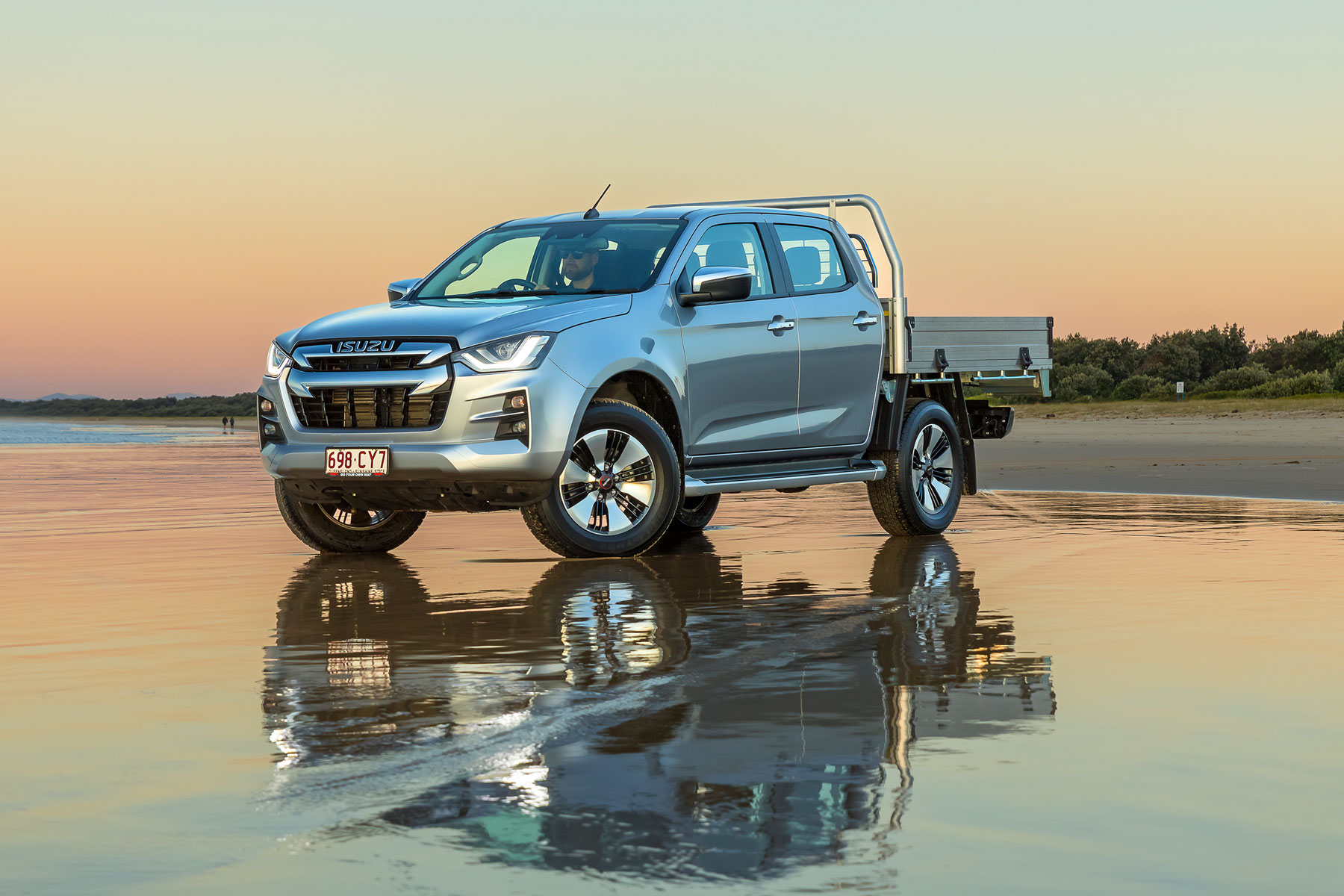


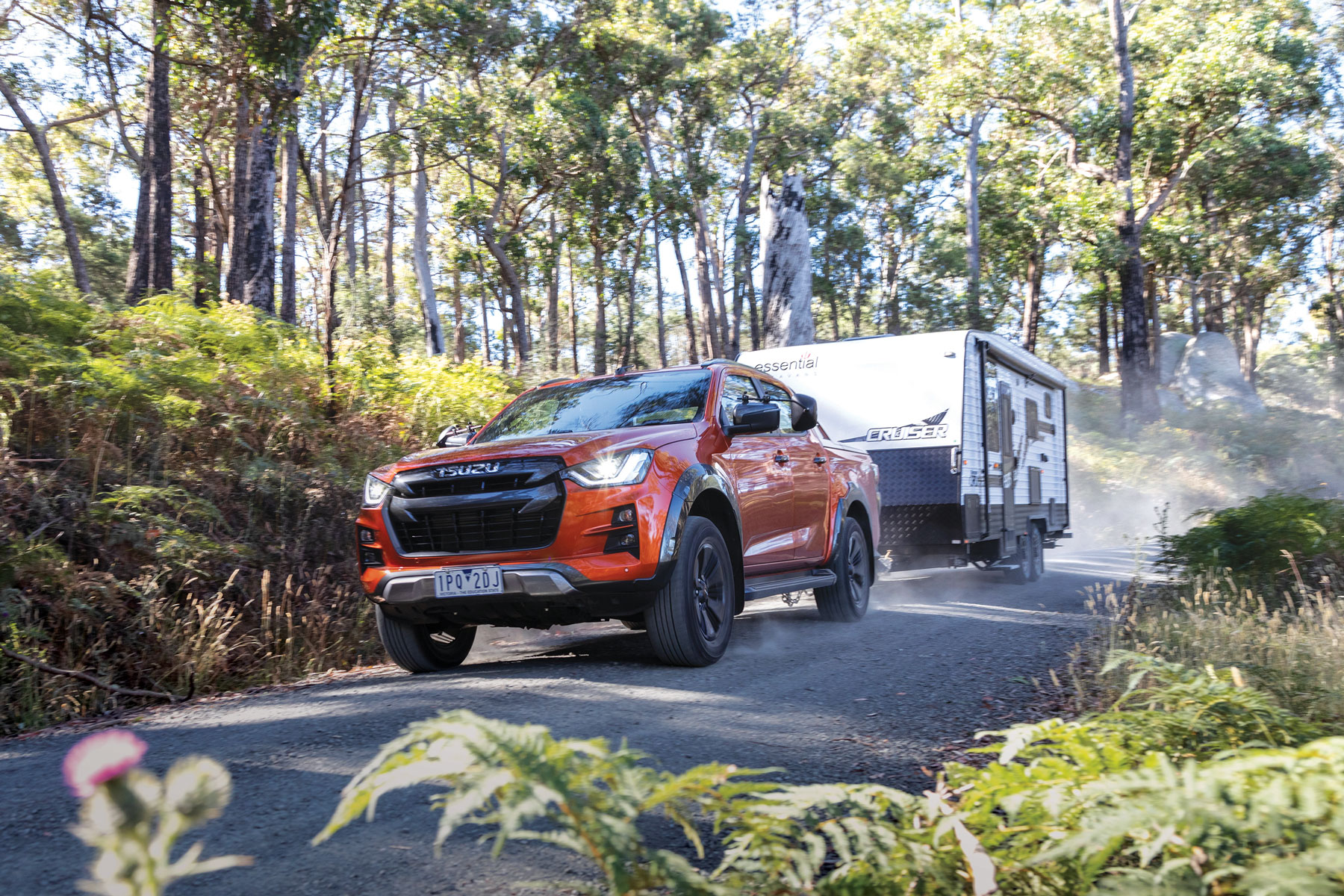
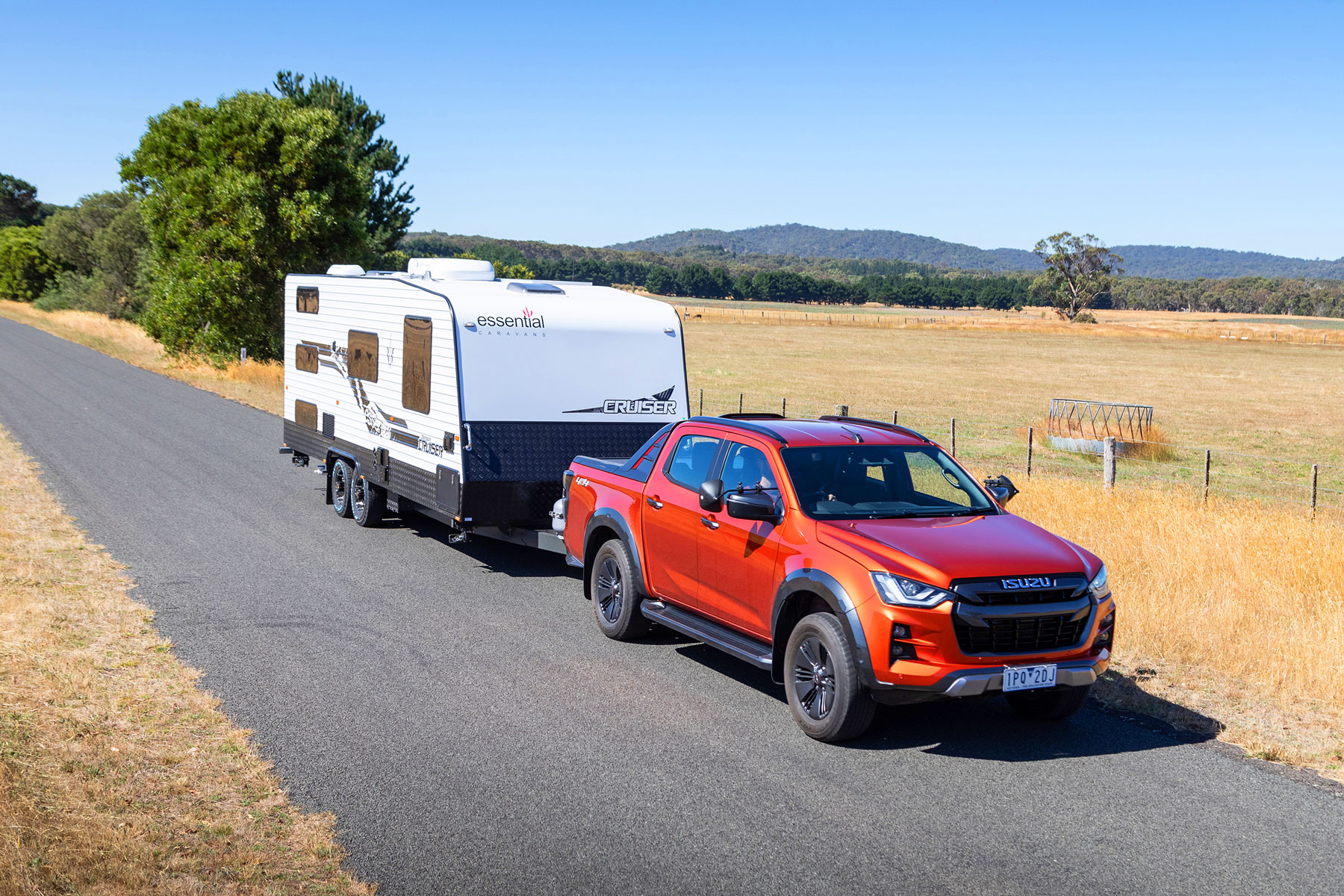
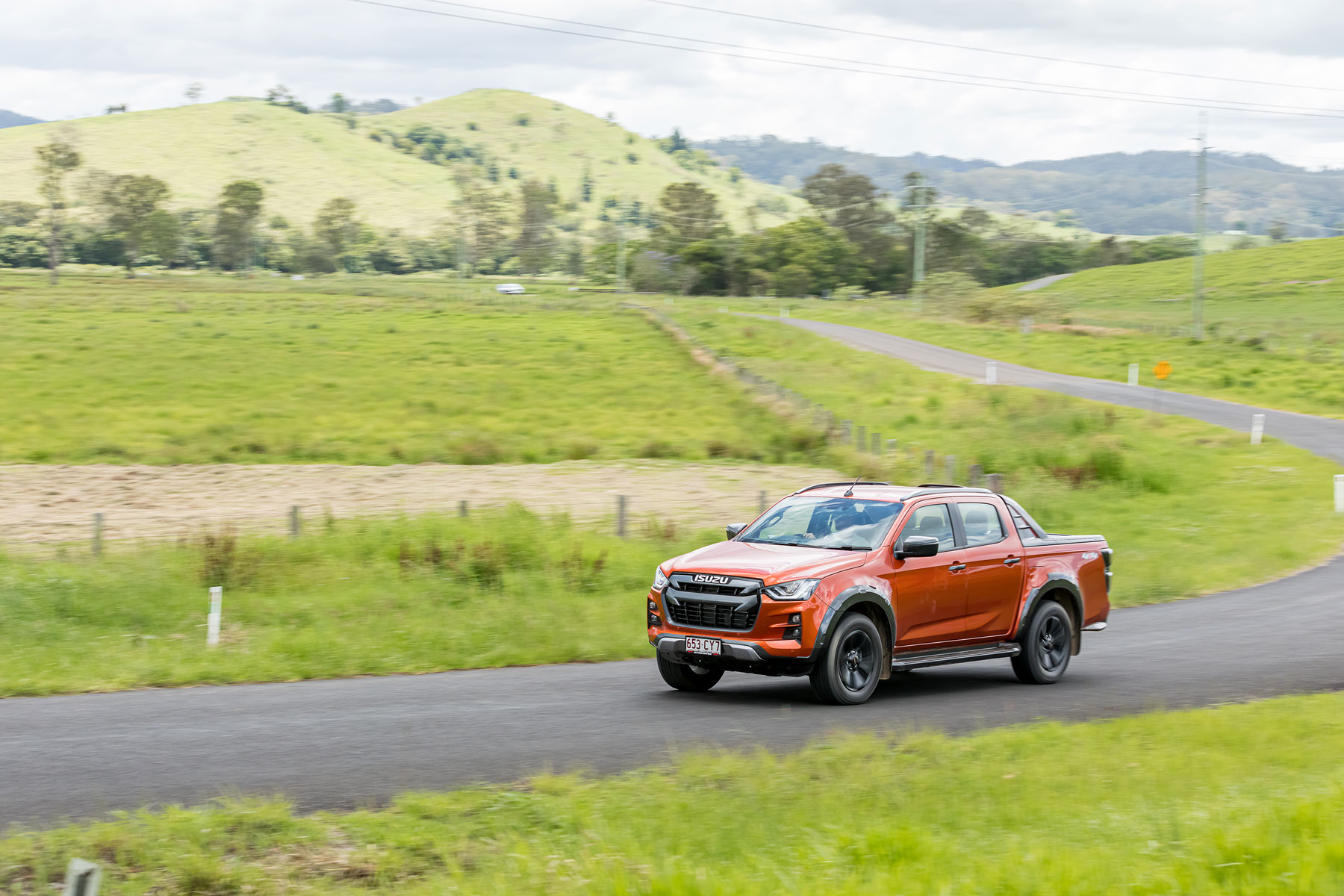
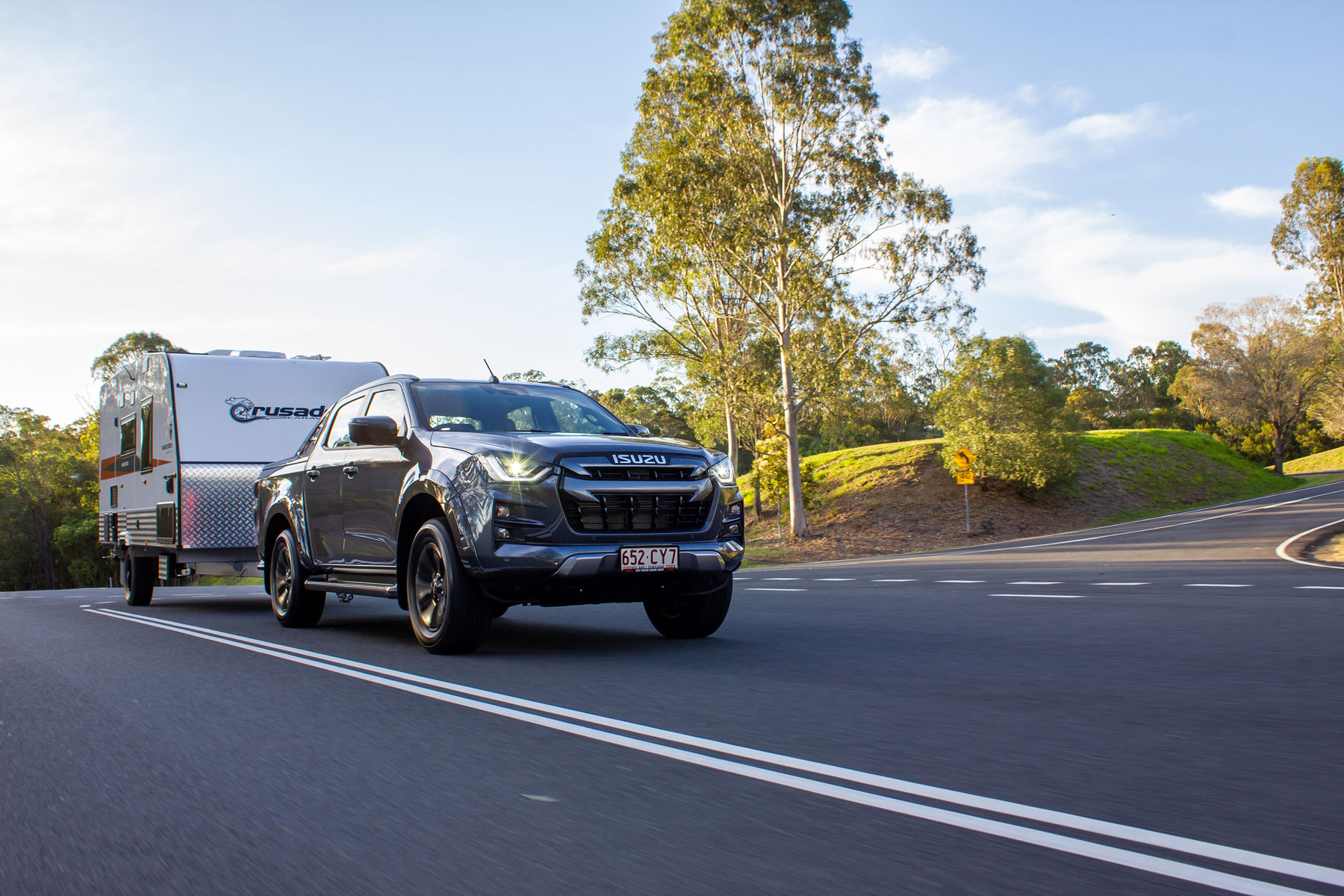
Put simply, the car has several sensors including cameras, sonar and radar to detect road conditions which interface with computers to inform and warn drivers. If we fail to act, the system will take control of braking, acceleration and steering using actuators. Below are the systems that are available on the latest generation Isuzu D-MAX which they call Intelligent Driver Assistance System. We look at ADAS features that are applicable for general non-towing situations and what changes for towing and off-road applications.
Autonomous Emergency Braking (AEB)
A stereo camera is fitted to the top of the windscreen. The two lenses create depth perception and play a critical part in the car “seeing” what is ahead of it for multiple safety functions. If the onboard computers calculate that your speed relative to the distance of an object in front of you poses a threat, then the system kicks in. If the system determines you have time to react, you will receive a Forward Collision warning – audible warning sounds and red warning lights flashing on the dashboard. If the driver is determined to not have enough time to react or has not applied enough brake force, the system will apply the appropriate brake force.
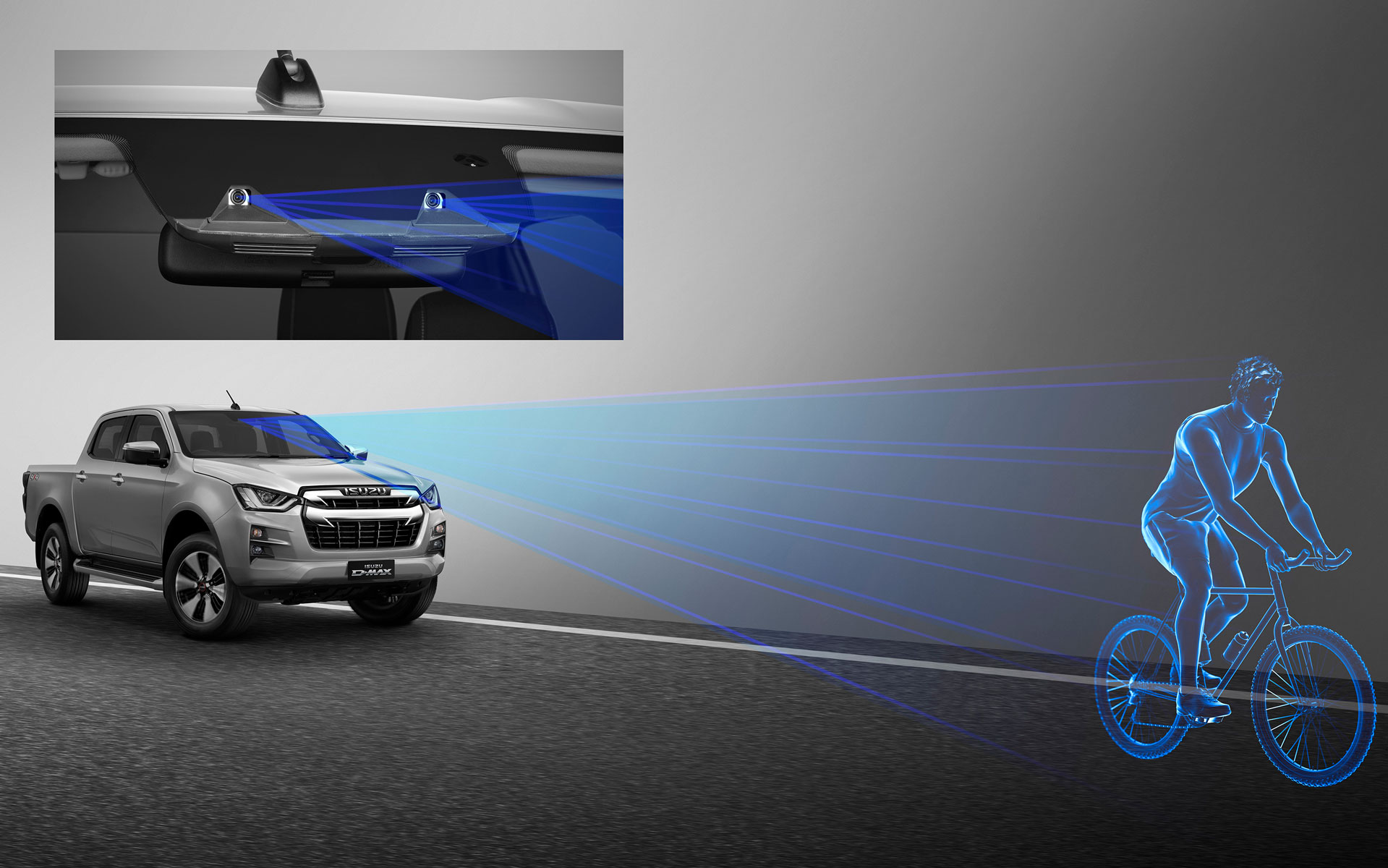
AEB can sense and react to vehicles ahead of you, as well as pedestrians and cyclists.
AEB with Turn Assist
Turn assist is a variation of AEB, in which the system scans for potential dangers ahead of the path of the vehicle when turning at an intersection. Steering input is recognised by the system and if it determines that the vehicle will turn across the path of oncoming traffic, which could result in a collision, AEB will kick in, bringing the vehicle to a halt.
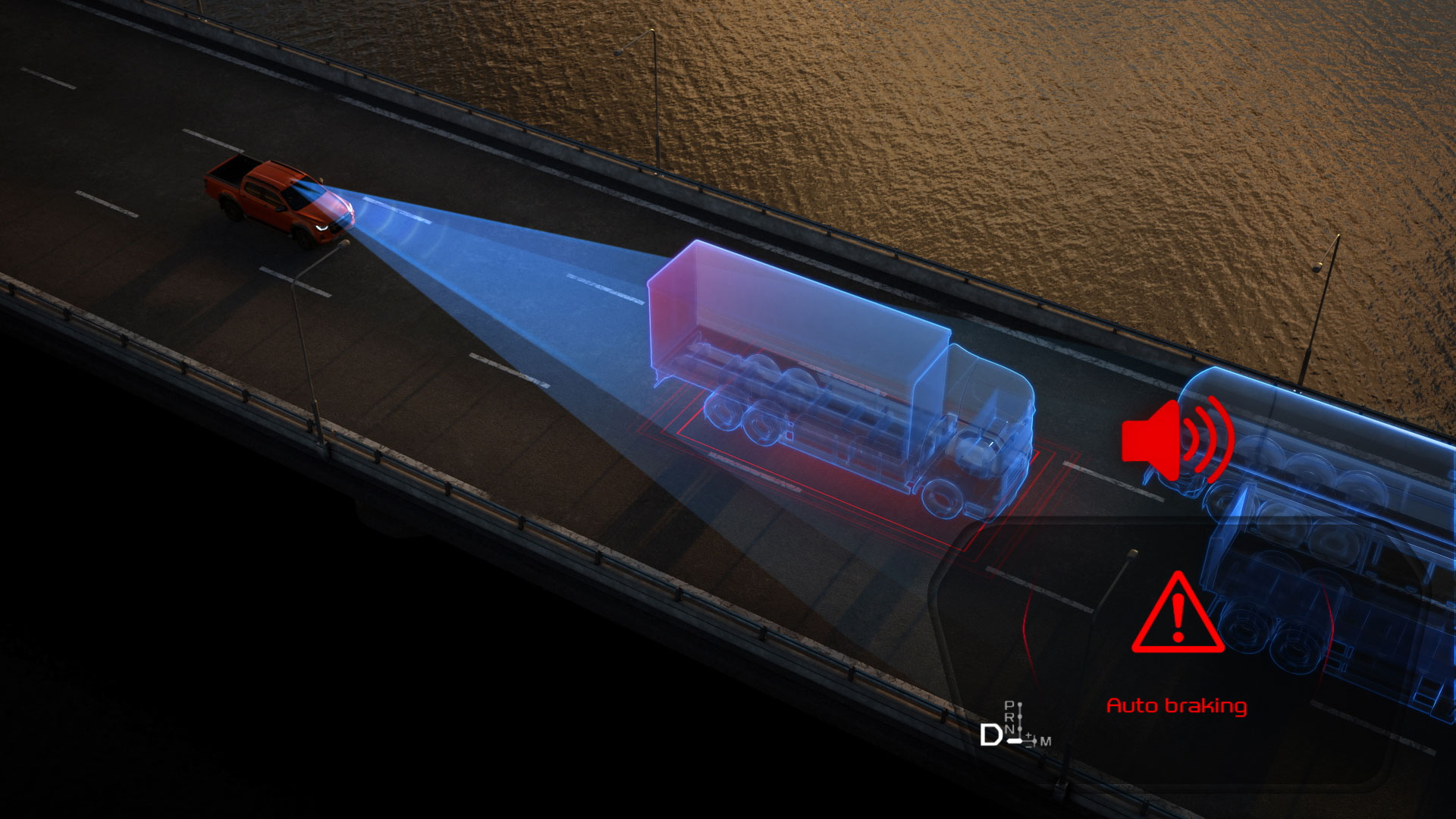
Brake Assist
Even if you do react to an emergency braking scenario by applying the brakes, the autonomous braking system can apply additional brake force if the computer determines you will not stop fast enough.
Adaptive Cruise Control
Conventional cruise control locks in and maintains a pre-set speed regardless of what is in front of you. Adaptive Cruise Control will actively maintain the pre-set distance of the vehicle with the vehicle ahead of it, speeding up to the pre-set speed and slowing down with the flow of traffic, even coming to a complete stop. When the D-MAX detects that the vehicle ahead has taken off, the D-MAX will accelerate to the set cruise control speed and will maintain the pre-set distance ahead. Adaptive cruise control has three set following distances and is only available in automatic transmission models.
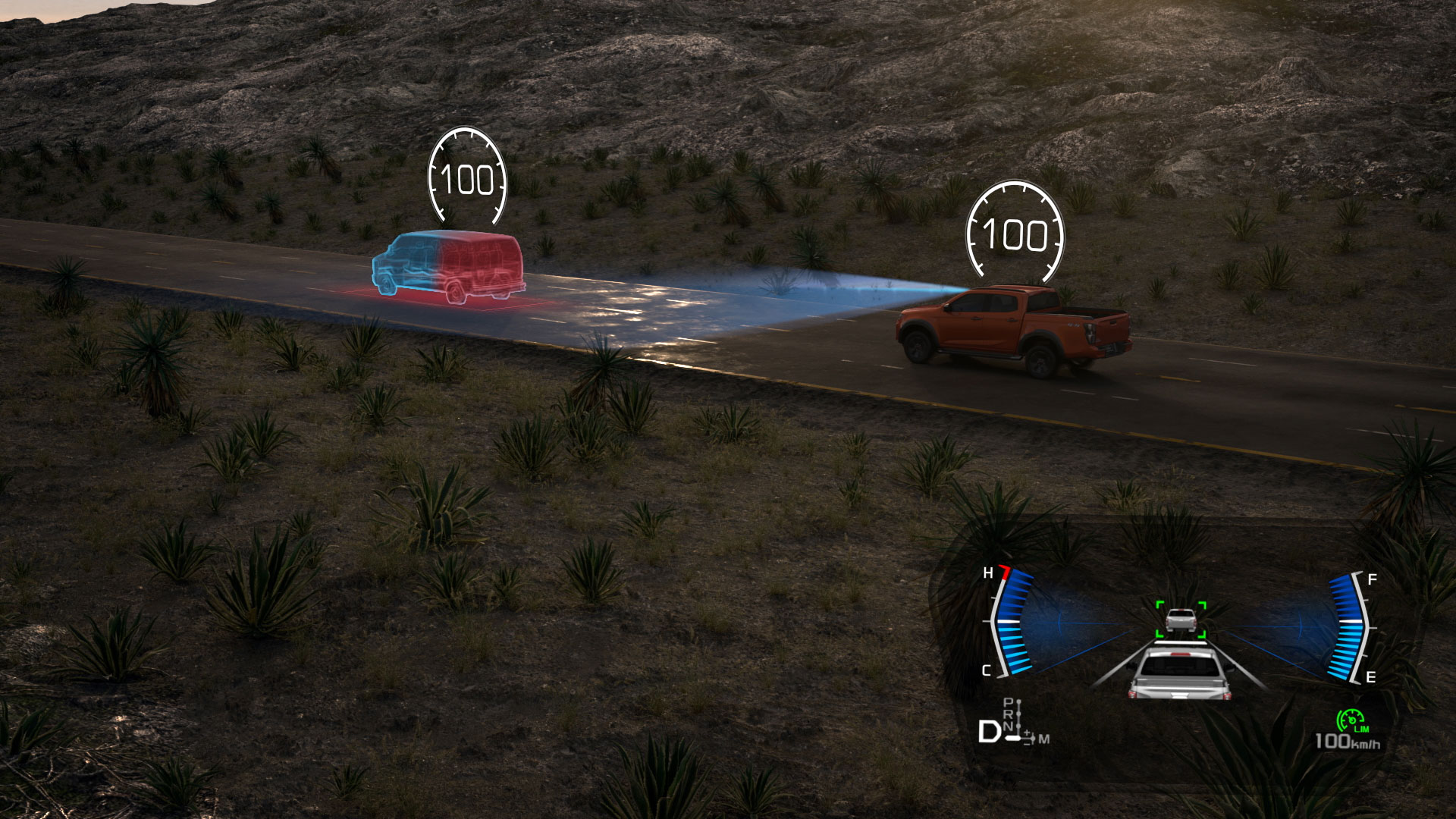
Post Collision Braking
Some accidents are unavoidable and often after one collision the vehicle may inadvertently be involved in a subsequent collision which could lead to further injury and involve other road users. Post collision braking applies brake force to all wheels to bring the vehicle to a complete stop when it detects that it has been in an incident.
Misacceleration Mitigation
Otherwise known as pedal misapplication mitigation, in slow-moving scenarios, such as carparks or when crawling with traffic, the system detects whether there is an object or vehicle ahead and if the accelerator has been applied accidentally or in excess, then the system will apply brakes to avoid a potential collision.
Lane Support Systems
Lane driving assist features work in several ways. Lane Departure Warning alerts the driver when the vehicle starts drifting out of the lane. Lane Departure Prevention is activated if the vehicle is about to depart from the driver's lane, with the system actively steering the vehicle back to the centre of the lane. During a lane change on a multi-lane road or highway, if the system detects a vehicle in the blind spot or that the vehicle in the adject lane is travelling at a speed that could potentially collide with the D-MAX, then Emergency Lane Keeping will alert the driver and provide some steering resistance to warn the driver of the danger. Lane Keep Assist comes into play when Adaptive Cruise Control is engaged. The system is designed to detect road lane markings and assist steering operation by keeping your vehicle in the centre of the lane.
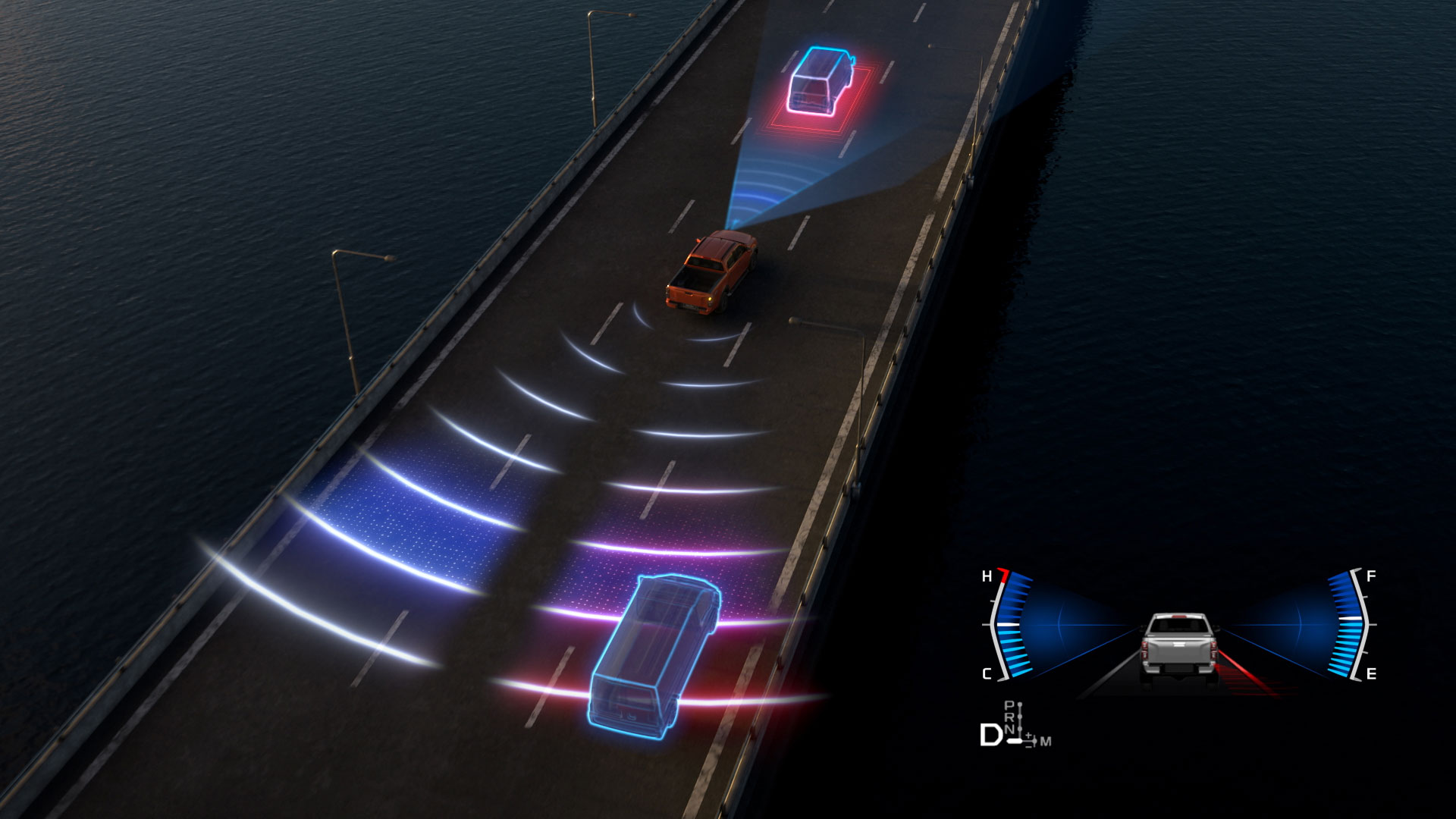
Isuzu also reference Driver Attention Assist which it describes as a system to identify signs of fatigue or inaccurate driving behaviour. There are alternative inattention and fatigue sensors available outside the ute market from companies such as Subaru, which uses an infrared LED and a camera inside the cabin to track driver actions. If the system detects that your head is turned away from the road ahead an audible and visual warning is initiated. Indicators of drowsiness of dozing off is monitored via eye activity. This system is passive in that it does not correct steering. The system may also be impeded if the driver's face and eyes are not clearly visible by items such as face coverings, spectacles or sunglasses.
Traffic Sign Recognition / Display
The Isuzu D-MAX recognises certain traffic signs using the stereo camera, displaying them on the dashboard. Signs recognised are speed limits (sign-posted and digital), “no entry” and “no overtaking” sign. The traffic sign recognition enables two more important features. A speed limit alert sounds a buzzer if the speed limit is exceeded, and the Intelligent Speed Limiter restricts driving beyond a set speed as detected by the stereo camera.
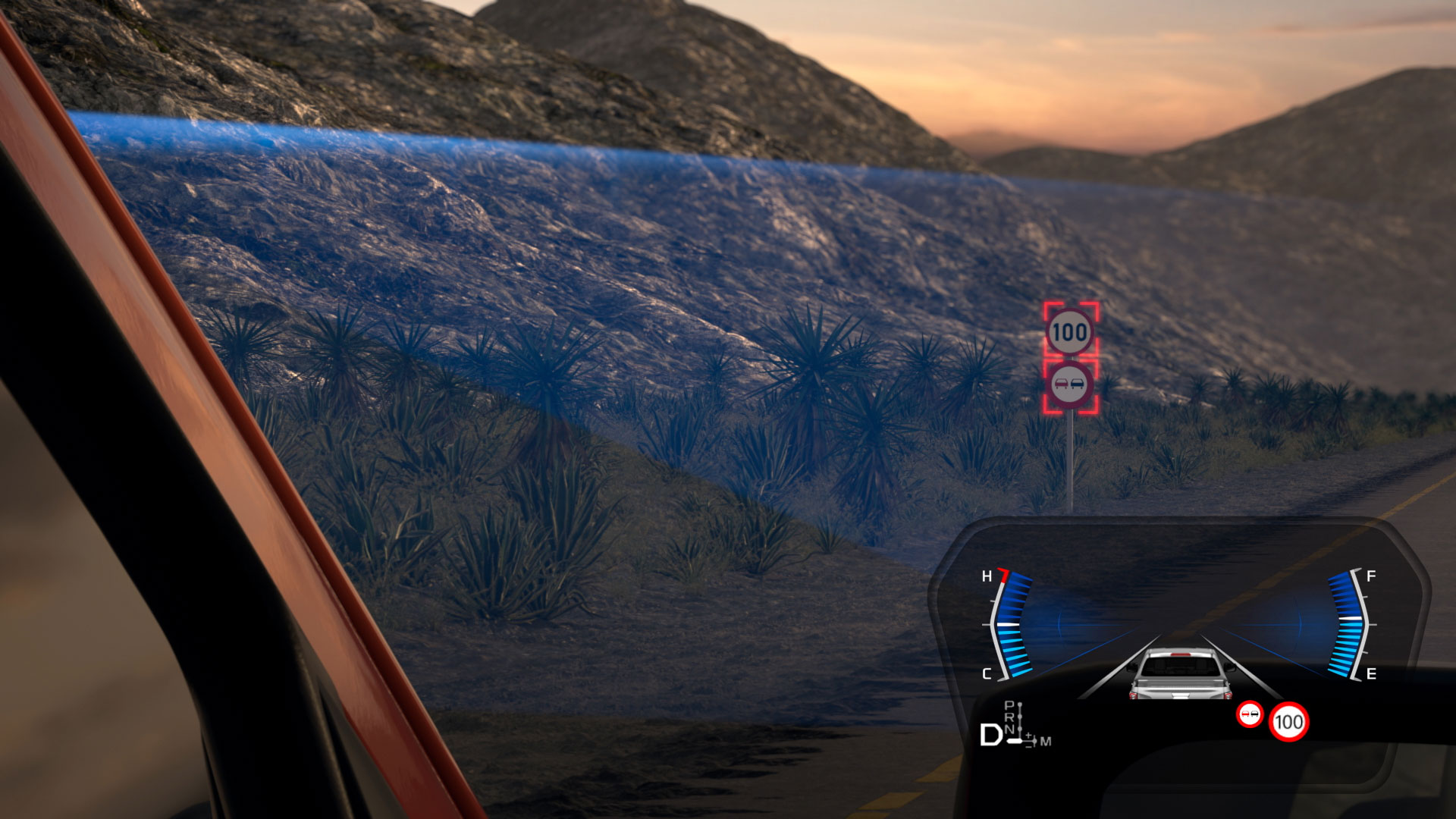
Rear Cross Traffic Alert
Twin sonar sensors mounted in the rear bar monitors the area surrounding the vehicle while reversing into traffic, providing visual and audible warnings should an object approach from the left or right. The Isuzu does not feature rear automatic braking. We have used rear auto braking in other vehicles and found it clunky at times when reversing up to a caravan to hitch up as the brakes inadvertently activate.
Trailer Sway Control
This is the big one for us caravanners. Trailer sway can be a very nasty situation on the road. Strong wind gusts or oncoming trucks displacing a lot of air can push your van sideways. Evasive manoeuvres around traffic hazards can also send your van sideways. These scenarios can initiate a side-to-side swaying action of the van that can rapidly become more violent and be virtually impossible to correct. You won’t have to look too hard on the internet to find images of vans rolling over and even the tow vehicle rolling with it.
Tech is now starting to become more available to mitigate these risks. Trailer sway control systems are now being built into some caravans, but it is certainly far from universal. For more information on this see the article on Tow Assist. Trailer sway controls are now also being built into tow vehicles.

Trailer Sway Control senses when a sway occurs by monitoring the attitude of the vehicle through sensors. Computers then correct side-to-side instabilities by automatically applying brake force to individual wheels to oppose the swaying action. The system also reduces engine power to bring the trailer back under control.
What to turn off when towing
Some ADAS features are designed to warn and react as a single vehicle without a trailer hitched. Isuzu advise that the following features need to be turned off when towing: Lane departure prevention, Emergency Lane Keeping, Blind Spot Monitoring, Rear Cross Traffic Alert. All of these systems could detect the caravan as a separate vehicle at risk of collision and engage steering input to avoid it, which could result in an accidental loss of control.
Isuzu also recommend that with the above features disabled, you don’t use adaptive cruise control and lane keep assist whilst towing, as these autonomous features may counteract the wider turning arc steering inputs that someone would use when turning a corner with a caravan in tow.
One thing you won’t have to turn off on selected models is the reverse sensors. They switch off when the trailer plug is connected.
What to turn off when offroad (towing or not)
Some features that enhance safety on road can bring you to a halt off-road. The cameras for autonomous emergency braking could interpret a body of water during a water crossing as a collision hazard and apply the brakes at an inopportune time. In a worst-case scenario this could let water in and cause serious damage to the vehicle. AEB could also interpret steep terrain or branches as a potential hazard and brake when you don’t want it. Therefore, AEB should be turned off in these scenarios.
We haven’t covered off traction control and electronic stability control features above, as they have been around for some time now. These systems reduce drive to a given wheel if wheel spin or loss of steering is detected. In soft sand or mud, traction control and ESC should be turned off. Otherwise, wheel slip will trigger a reduction of drive to that wheel. The lack of drive will impede your forward momentum and could get you stuck.
Well worth having
Isuzu have the caveat (along with all the brands with similar systems, no doubt) that the features are designed to assist the driver but should not be relied upon nor used as a substitute for safe driving practices. And that feature operation may vary in different operating conditions.
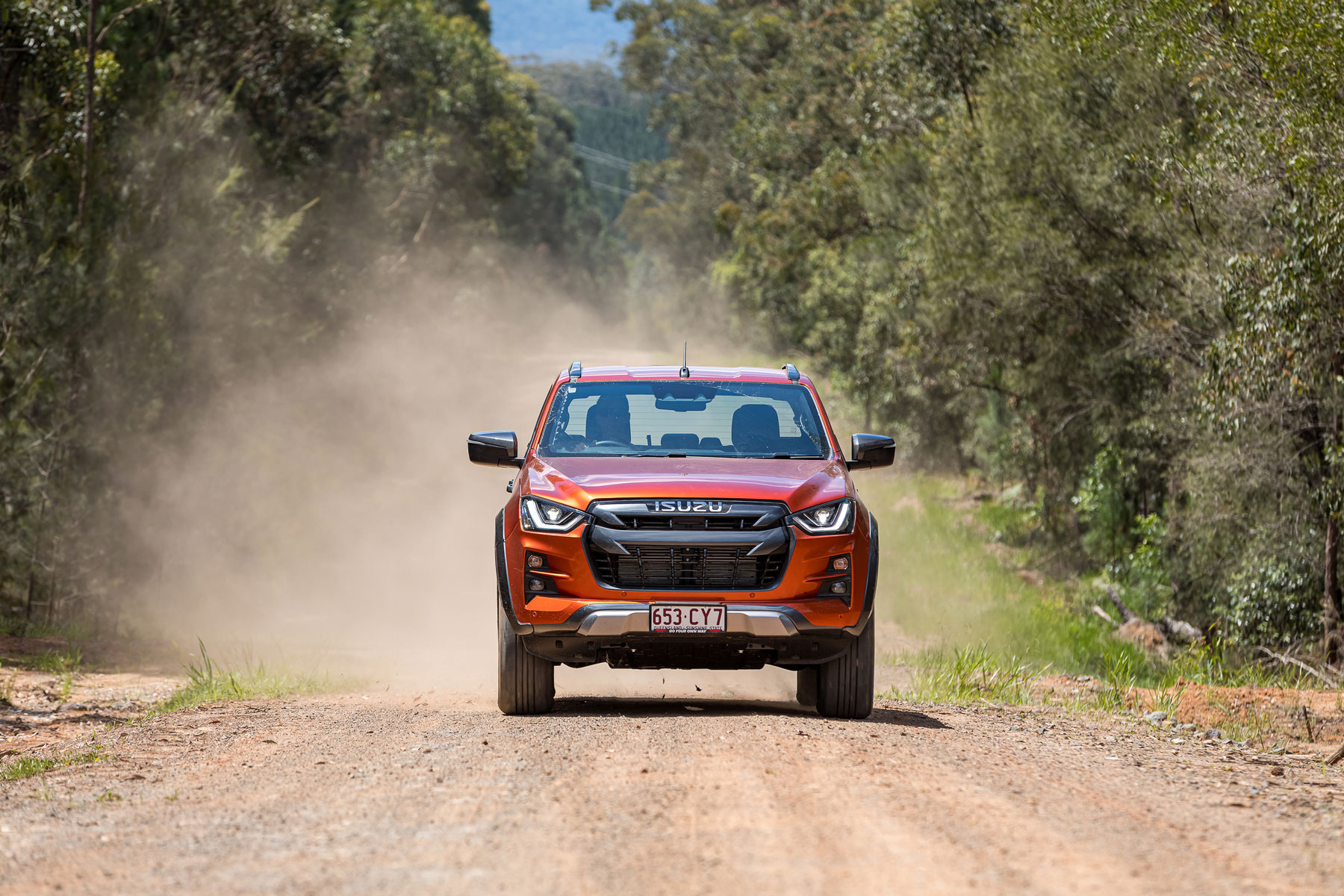
At Caravan World, we have spent a fair bit of time in the Isuzu D-MAX with and without vans on the back, so we have a good feel for ADAS in practice. Obviously, you don’t encounter emergency situations every day, but very carefully giving the car a chance to do its thing by leaving braking or steering a little late leaves me with no doubt that this vehicle can save lives. Unfortunately, you can’t have everything active when towing, but it is still a huge leap forward.
There was an additional benefit that I didn’t consider. In day-to-day driving, you are very aware that the system “guides” you. At first, ADAS can be very disconcerting at times when the “car takes over” when you don’t agree with what it is doing. But it forced me to think about whether my driving was best practice when ADAS kicked in. If I am honest with myself, ADAS can train you to be a safer driver by sticking within its acceptable parameters. Here are a couple of examples. I was making a right-hand turn at an intersection without a turning arrow. I edged forward as an oncoming car was coming through so I would be ready to fit through a gap in the traffic. The Autonomous Emergency Braking with Turn Assist automatically hit the brakes. I didn’t perceive that I was in danger of collision, but the system encouraged me to have a larger margin for error when approaching intersections. Similarly, I do find myself using up all of my lane on curvy roads to make the corners feel as smooth as possible. At times on blind corners, this is not good practice. While it can be annoying feeling the car gently moving you back into the middle of the road, after a while, you get used to what she wants and just stick with where you are supposed to be.
Not everyone can afford a new car with ADAS, but it is becoming more mainstream. I strongly encourage people to consider vehicles with these systems. And anyone who says they don’t need these systems because they are a good driver is kidding themselves.




